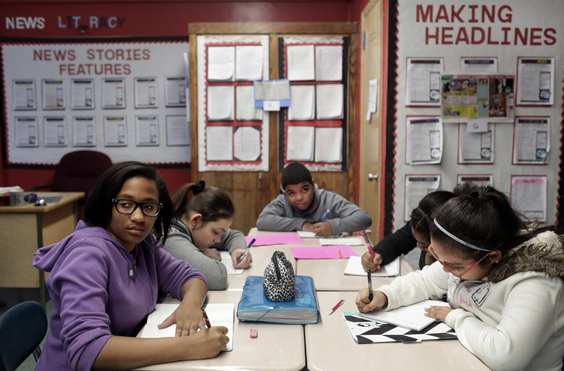Fake news worked its way into the public consciousness during the presidential campaign last year and remains a hot topic, especially at Intermediate School 303 in Coney Island, Brooklyn, where teachers like Ms. Solano are on the offensive. Their lesson plans are aimed at steeping students in news literacy, which involves determining whether an article or a video is real — and if it is real, whether it is, for example, a news story or an advertisement made to look like a news report.
The teachers see an urgency to news literacy because, on the internet, misinformation can be mistaken for news. Is a tweet ripped from the headlines, or fabricated?
“You have to be selective about what you take in and accept as truth,” the teacher, Rema Kaddah, told them. “Don’t accept somebody else’s truth. You’re living in a different world than we grew up in. You need to think about how to arm yourself to fact-check this world.”
Indeed, this is a confusing time to be teaching the difference between fake news and real news, what with President Trump blasting television networks and The New York Times as the “fake news media.” And social media has contributed to the spread of stories that have no basis in fact, with troubling consequences.




